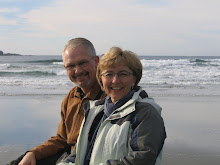Thanks to the help of the Administrator of the Global Anabaptist Mennonite Encyclopedia Online (GAMEO), I got the information about the Reformed/Mennonite reconciliation. It was found in an article in the August 2, 2004 issue of the Canadian Mennonite. An excerpt of the article is quoted below.
"On June 26, 2004, Christians from the Zwinglian Reformed tradition and the Anabaptist church confessed sin that had separated them 500 years ago and extended forgiveness to one other.
Some 400 people from four continents participated in the Anabaptist-Reformed Reconciliation Conference. The settings were the Grossmünster, the church where in 1525 Ulrich Zwingli preached against the Anabaptists, and the nearby Limmat River, where in 1527 Zurich authorities ordered the drowning of Felix Manz, one of the earliest Anabaptist leaders. About a dozen Canadians were present.
In an afternoon worship service, Larry Miller, executive secretary of Mennonite World Conference, preached from Zwingli’s pulpit. In his sermon, “The new city,” he said that the best in the Reformed vision of the church was like the Old Testament city, “open to all citizens without exception.” It lifts Jesus as lord of all and calls the church to shape society.
The Anabaptist vision, said Miller, was typical of the New Testament “city set on a hill,” a community of disciples following Jesus in daily life, separated from the world while witnessing to it. Persecution, however, drove Anabaptists into separatist communities.
“After lighting the lamp, we hid it under the bushel where it neither illuminates good works nor provokes offerings of glory to God,” said Miller. He commended the Reformed Church for taking steps “towards fuller communion with former adversaries.”
Confessions and responses from each group were among the conference’s most moving moments. Reudi Reich, president of the Reformed church in the Canton of Zurich, read a statement of regret for the persecution of the early Anabaptists.
In response, Ernest Geiser, president of the Council of Elders of the Swiss Mennonite Church, said: “Descendents of the formerly persecuted Anabaptists among you today no longer see themselves as victims…. We accept your confession with a spirit of forgiveness.”
In the evening, people gathered on the bank of the Limmat near the spot where Felix Manz was drowned. A rowboat slipped silently along the river and in a dramatic move, the rowers snatched the cover from a new plaque on the wall.
The English translation of the inscription reads: “Here in the middle of the Limmat River from a fishing platform, Felix Manz and five other Anabaptists were drowned between 1527 and 1532 during the Reformation. The last Anabaptist executed in Zurich was Hans Landis in 1614.”
At the dedication of the plaque, Reich again asked forgiveness for the persecution inflicted on Anabaptists nearly five centuries ago. Thomas Gyger, president of the Swiss Mennonite Conference, noted that city authorities and the church in the 16th century were trying to maintain public order in the face of what they considered a serious threat. He expressed gratitude for the memorial and the steps towards reconciliation."
Tuesday, November 10, 2009
Subscribe to:
Post Comments (Atom)

No comments:
Post a Comment